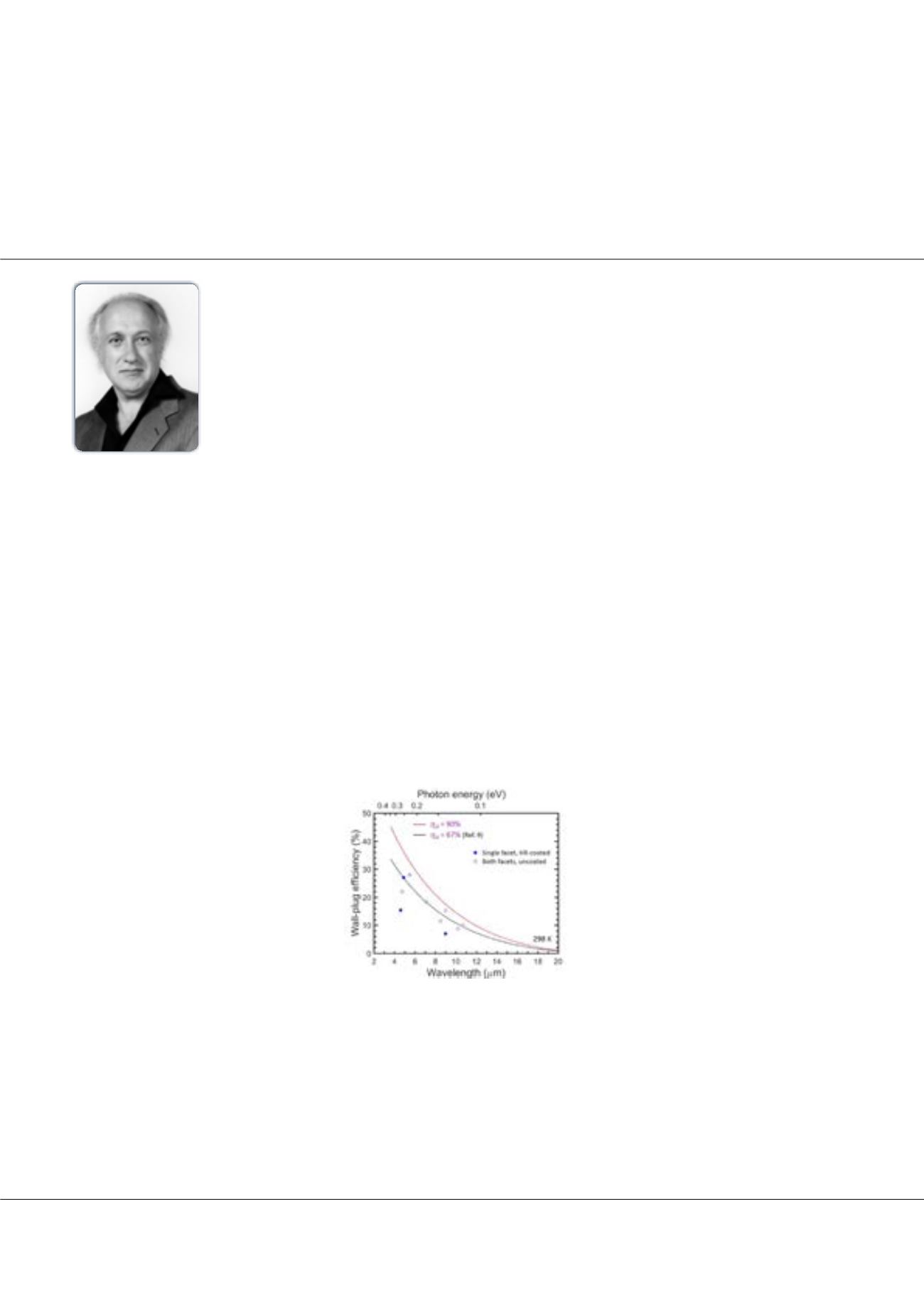

Volume 4, Issue 2 (Suppl)
J Laser Opt Photonics, an open access journal
ISSN: 2469-410X
Page 24
conference
series
.com
JOINT EVENT
July 31- August 02, 2017 Milan, Italy
&
6
th
International Conference on Photonics
7
th
International Conference on Laser Optics
High-internal-efficiency quantum cascade lasers: the road to mid-infrared lasers of 40% CWwall-
plug efficiency
T
he internal efficiency
η
i
of quantum cascade lasers (QCLs) is the factor in the expression for the external differential
efficiency that encompasses all differential carrier-usage (i.e., the injection efficiency) and lasing-photon-transition
efficiencies. For conventional QCLs the
η
i
values have been found to be rather low: 50-60% in the 4.5-6.0 μm wavelength
range and 57-67% in the 7-11 μm wavelength range; with, until recently, no clear explanation why that was the case. With the
advent of combining carrier-leakage suppression with fast, efficient carrier extraction out of the active regions of QCLs, the
η
i
values have steadily increased and are approaching their fundamental upper limit of ~ 90% for mid-infrared (IR)-emitting
devices. We will review the developments that led to high
η
i
values throughout the mid-IR wavelength range. Conduction-band
engineering has led to the so-called step-taper active-region (STA) QCLs which have provided
η
i
values 30-50% higher than
in conventional QCLs over both the 4.5-6.0 μm and 7-11 μm wavelength ranges. A record-high, single-facet, continuous-wave
(CW) power, for 8.0 μm-emitting QCLs, of 1.0 Watt has been achieved from STA-type QCLs. Furthermore, the recognition
that the fundamental limit for
η
i
(i.e., 90%) is 34% higher than the
η
i
value employed a decade ago when determining the
fundamental limit for the wall-plug efficiency of mid-IR QCLs, has led to the realization that wall-plug efficiencies ≥ 40% can
be achieved for 4.5-5.0 μm-emitting QCLs. The practical benefits of achieving such high performance from mid-IR emitting
semiconductor lasers will be discussed as well.
Wall-plug-efficiency fundamental limits for mid-infrared-emitting QCLs
Biography
Dan Botez is Philip Dunham Reed Professor in the Department of Electrical and Computer Engineering at University of Wisconsin (UW) - Madison. In 1976, he obtained
a PhD degree in Electrical Engineering from University of California, Berkeley. He has carried out and led research in semiconductor lasers at RCA Labs, Princeton, NJ
and TRW Research Center, Redondo Beach, CA before joining, in 1993, the faculty at UW-Madison. His research interests lie in three areas of semiconductor-laser
physics: high-power, coherent edge-emitting lasers; high-power, coherent grating-coupled surface-emitting lasers; and quantum cascade lasers. The first two are based
on one- and two-dimensional, high-index-contrast, photonic-crystal structures, respectively, for insuring both long-range spatial coherence and stable operation under
continuous-wave (CW) driving conditions. The third involves electron transitions between the sub-bands of multi-quantum-well structures and is focused on achieving
high-efficiency CW operation in the mid-infrared wavelength range: 3-10 microns, via multi-dimensional conduction-band engineering.
botez@engr.wisc.eduDan Botez
University of Wisconsin-Madison, USA
Dan Botez, J Laser Opt Photonics 2017, 4:2(Suppl)
DOI: 10.4172/2469-410X-C1-010
















